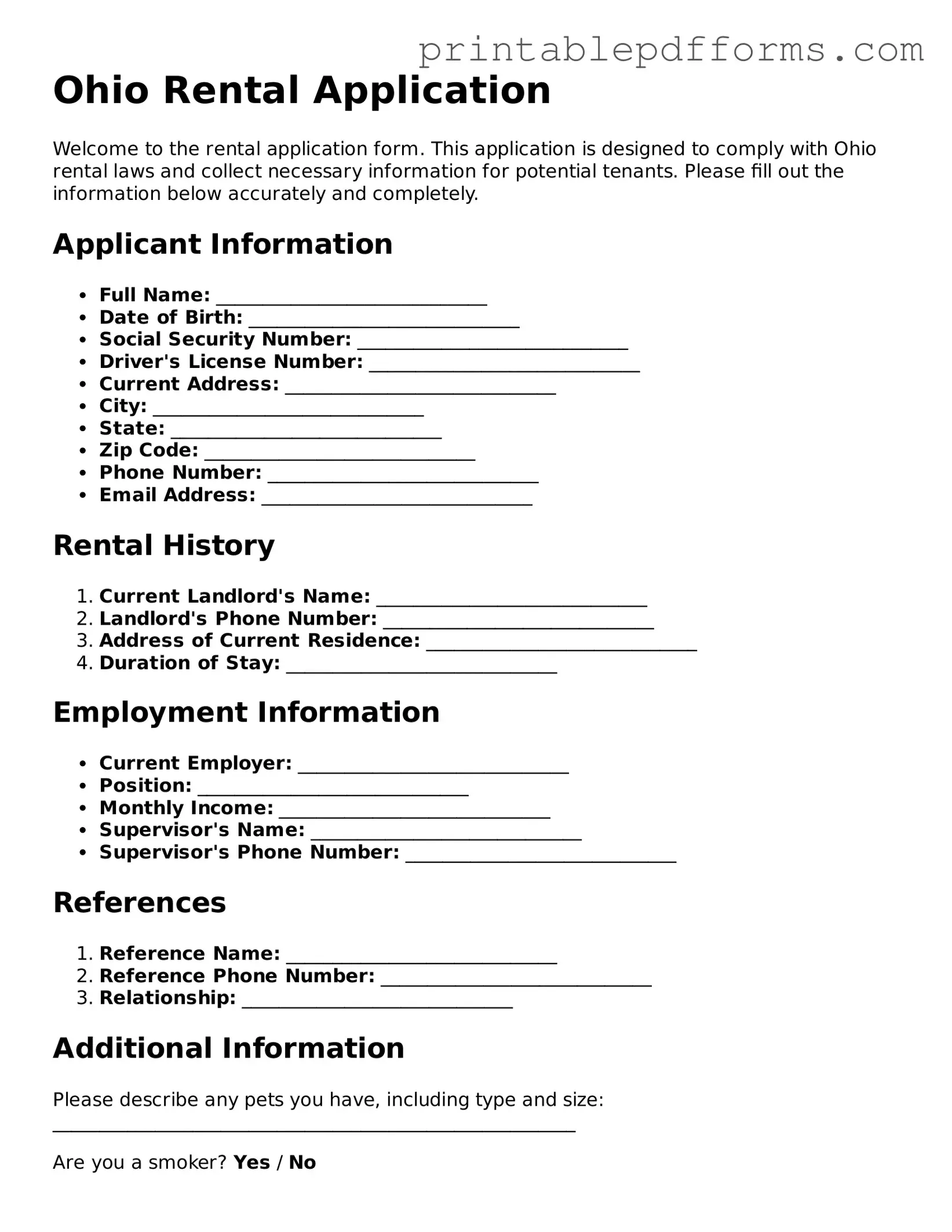Ohio Rental Application
Welcome to the rental application form. This application is designed to comply with Ohio rental laws and collect necessary information for potential tenants. Please fill out the information below accurately and completely.
Applicant Information
- Full Name: _____________________________
- Date of Birth: _____________________________
- Social Security Number: _____________________________
- Driver's License Number: _____________________________
- Current Address: _____________________________
- City: _____________________________
- State: _____________________________
- Zip Code: _____________________________
- Phone Number: _____________________________
- Email Address: _____________________________
Rental History
- Current Landlord's Name: _____________________________
- Landlord's Phone Number: _____________________________
- Address of Current Residence: _____________________________
- Duration of Stay: _____________________________
Employment Information
- Current Employer: _____________________________
- Position: _____________________________
- Monthly Income: _____________________________
- Supervisor's Name: _____________________________
- Supervisor's Phone Number: _____________________________
References
- Reference Name: _____________________________
- Reference Phone Number: _____________________________
- Relationship: _____________________________
Additional Information
Please describe any pets you have, including type and size: ________________________________________________________
Are you a smoker? Yes / No
Signature
By signing below, you certify that the information provided is true and complete:
Signature: _____________________________
Date: _____________________________
